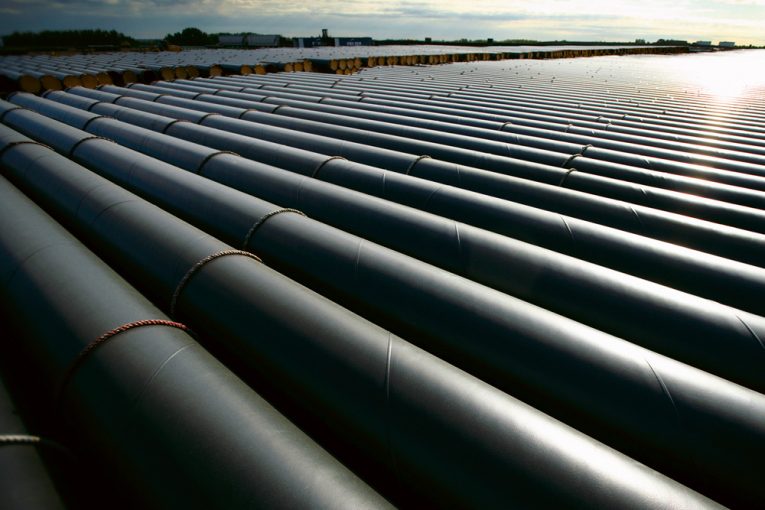
CALGARY – Canadian oil companies are worried that a new, “alarming” change to the way the country’s largest pipeline network operates will make it more difficult for them to secure space in an already scarce pipeline system.
The Mainline system, operated by Enbridge Inc., is Canada’s largest and most important oil export system, carrying 2.85 million barrels of oil per day through a network of multiple pipes to U.S. Midwest markets. That’s about 70 per cent of all oil pipeline capacity out of Western Canada.
For the last 70 years, the Mainline has operated as a 100 per cent “common carrier” system, which means producers or refiners can ask for space on the pipelines a month ahead of time without the need to sign a long-term contract. But now, Enbridge is proposing to make a major change to the system by launching an open season to contract 90 per cent of the space on the lines on a long-term basis, leaving just 10 per cent of the system for spot shippers each month.
In a letter sent to the National Energy Board on July 23 and obtained by the Financial Post, Explorers and Producers Association of Canada president Tristan Goodman said he’s “concerned with proposed changes” to Enbridge Inc.’s Mainline pipeline network. He said the changes would pose “risks of material harm to Canadian producers including EPAC members, Canadian and provincial governments and the citizens of the western provinces are significant and overshadow any perceived benefits.”
Calgary-based Enbridge releases its second quarter results Friday and many in the oilpatch believe it will announce the open season for contracts then.
For its part, Enbridge said it has been working to address concerns about the existing process and the new contracted system for both producers and refiners.
“Enbridge has spent more than a year engaging with industry to develop a range of service offerings that provide both term and volume flexibility to meet the needs of all market participants, large and small,” spokesperson Jesse Semko said in an email.
Still, companies are nervous about changes to the strained system at a time when new pipeline projects have stalled.
“Enbridge’s proposed change to contract carriage puts shippers, especially upstream Canadian producers, in the difficult position of being forced into participating in the open season when pipeline capacity is in short supply and future expansions are uncertain,” Goodman wrote in the letter to the NEB.
His letter said the “fundamental change is alarming” and recommended it be delayed. Goodman declined to discuss the letter as he’s continuing to discuss the change with the small- to mid-sized oil and gas companies he represents.
The change has also divided larger Canadian oil producers with integrated companies supporting the change and companies without refining assets raising concerns about the proposal.
We have to be careful we don’t shift all the market power to the buyers and not the producers
Canadian Natural Resources Ltd. executive vice-chairman Steve Laut
“We have to be really careful here on this firm capacity and whether it’s something we should even be doing. I know Enbridge wants to do it and I know the refiners in the Midwest really want it and the marketers really want it,” Canadian Natural Resources Ltd. executive vice-chairman Steve Laut said on a podcast hosted by ARC Energy Research Institute this month.
“We have to be careful we don’t shift all the market power to the buyers and not the producers,” he said, though he gave Enbridge credit for trying to design a system that smaller producers could participate in.
But small producers have been particularly nervous about signing up for long-term agreements on the pipeline network.
“Several contract provisions specifically address interest from small producers. Credit requirements are substantially reduced relative to a typical take-or-pay contracts,” Enbridge’s Semko said.
“The minimum Mainline open season volume commitment will be 2,200 barrels per day, which represents one standard batch per month,” he said, referring to small volume commitments that should allow junior and intermediate producers to participate.
Jackie Forrest, ARC Energy Research Institute’s senior director of research, said the changes to the Mainline would mean the amount of space available to the spot market would fall from 79 per cent to 15 per cent of all available pipeline space out of Western Canada.
She also noted the Colonial Pipeline in the U.S. attempted to move from a common carrier to a contracted system in 2014 but was denied by the U.S. Federal Energy Regulatory Commission because the pipeline company didn’t attempt to expand the system.
Enbridge will need approvals from the National Energy Board to make the switch.
Cenovus Energy Inc., which has stakes in U.S. refineries through joint-venture partnerships, said the change would help expand markets for Canadian oil.
“The industry is working through the process to ensure we have a level playing field for everyone,” Cenovus spokesperson Ruth Anne Beck said in an email. “However, without changes to the current process, apportionment risk continues to be something we will have to manage.”
Apportionment – the need to limit access to the Mainline – has been at the heart of the fight over the system for months, since Canadian oil production surpassed the country’s total pipeline export capacity in the middle of 2018.
The growth of Canadian oil production has made pipeline space both scarce and valuable, and companies have attempted to avoid apportionment by asking Enbridge for more space than they need on the system.
Companies have also increased the amount of oil they ship on railway cars, with crude-by-rail exports reaching 285,131 bpd in May 2019, the last month for which data is available, a 23 per cent increase from the the 232,294 bpd moved on rails in April.
• Email: [email protected] | Twitter: geoffreymorgan
You can read more of the news on source
